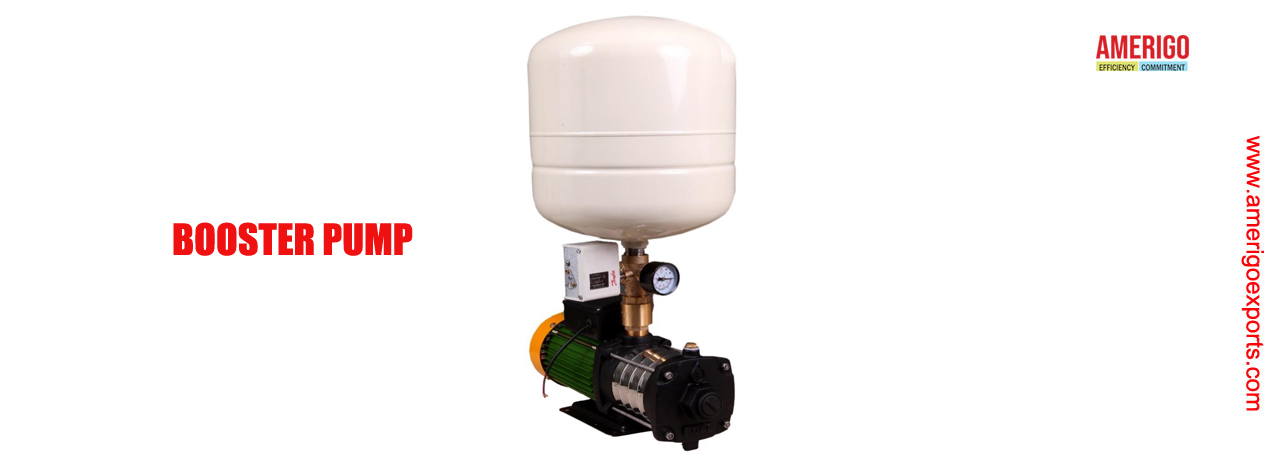

We are a leading Manufacturers of Booster pumps. Our Booster Pumps improves water pressure in homes, especially in multi-story buildings. Enhances shower performance when water pressure is low. Helps distribute water efficiently in large houses with multiple faucets. With all these key factors AMERIGO offers high quality Booster Pumps to all it's national and international buyers.

FEATURES OF BOOSTER PUMP :
Commercial & Industrial Uses : Maintains consistent water pressure in high-rise buildings, hotels, and malls. Used in firefighting systems to ensure adequate water pressure for fire sprinklers and hydrants. Assists in industrial processes that require high-pressure water supply.
Agricultural Uses : Boosts pressure in irrigation systems for better water distribution. Ensures efficient operation of drip irrigation and sprinkler systems.
Municipal Uses : Helps maintain water supply pressure in municipal water distribution networks. Used in wastewater treatment plants to move water through filtration and processing systems.
Plumbing & HVAC Systems : Used in heating, ventilation, and air conditioning (HVAC) systems for proper water circulation. Enhances efficiency of water cooling towers in large buildings.
TECHNICAL SPECIFICATIONS : A booster pump is used to increase the pressure of a fluid, commonly water, in a pipeline or system. The technical parameters of a booster pump vary depending on its application, but the key parameters include:1. Hydraulic Parameters : Flow Rate (Q): Measured in liters per second (L/s), cubic meters per hour (m³/h), or gallons per minute (GPM). Head (H): The pressure increase the pump provides, measured in meters (m) or feet (ft). Efficiency (η): The ratio of useful hydraulic power to input power, usually given as a percentage (%). Suction & Discharge Pressure: The pressure at the inlet and outlet, measured in bar, psi, or meters of water column.
2. Electrical Parameters : Power Consumption (P): Given in kilowatts (kW) or horsepower (HP). Voltage & Frequency: Typically 230V/50Hz (single-phase) or 400V/50Hz (three-phase); varies by region. Motor Speed (RPM): Commonly 2900 RPM or 1450 RPM (for centrifugal pumps). Starting Method: Direct On-Line (DOL), Star-Delta, or Variable Frequency Drive (VFD).
3. Mechanical Parameters : Pump Type: Centrifugal, multistage, or positive displacement. Material: Cast iron, stainless steel, bronze, or plastic (for impellers, casing, and seals). Bearing Type: Sleeve bearings or ball bearings. Shaft Seal: Mechanical seal or gland packing.
4. Operating Conditions : Operating Temperature Range: Typically 0°C to 80°C for water applications. Max Suction Lift: For self-priming pumps, usually up to 7 meters. Noise Level: Expressed in dB(A). Protection Rating: IP55, IP65, etc., indicating dust and water resistance. Cooling Method: Air-cooled or water-cooled motor.